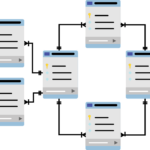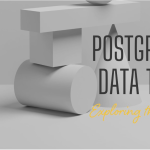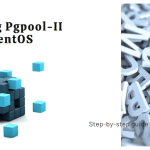Explore in‑depth PostgreSQL guides and tutorials at HeatWare. Learn database management, query optimization, and performance tuning for PostgreSQL effectively.
PostgreSQL
Use Prepared Statements to Boost PostgreSQL Performance
PostgreSQL handles databases well, but it can slow down without proper optimization. Here are some strategies to enhance its efficiency. Fine-tuning prepared statements is a key tactic. Implementing PostgreSQL’s prepared statements reduces SQL parsing time and boosts database performance. These statements are parsed and planned once, then run multiple times without re-parsing. This method is … Read more
PostgreSQL Materialized Views: Increase Performance by up to 60%
Materialized views boost PostgreSQL database performance by acting as stored snapshots of your data. This approach lets you avoid recalculating data each time you run a query, which speeds up response times. It’s like saving your work on a project, so you don’t have to redo everything. Materialized views provide performance gains by pre-computing and … Read more
PostgreSQL Stored Procedures: How to Boost Query Performance
Stored procedures in PostgreSQL can boost both performance and database management efficiency. Think of them as efficient task managers, ensuring operations run smoothly. Why Are Stored Procedures Important? Stored procedures are a cornerstone for effective database management, enhancing performance and supporting PostgreSQL scalability. For further information on stored procedures, refer to PostgreSQL’s official documentation. Exploring … Read more
Improve PostgreSQL Efficiency with CTEs and Window Functions (vs Subqueries)
Advanced SQL transforms data management, especially in finance and healthcare. Optimizing SQL queries with Common Table Expressions (CTEs) and using window functions significantly boosts query speed and efficiency when handling complex datasets. Advanced SQL techniques help businesses optimize databases, speeding up data retrieval and analysis. This is vital for managing larger and more complex datasets. … Read more
Sharding vs Partitioning: A Guide to PostgreSQL Scalability
Modern apps are growing fast, and they need databases that can keep pace. PostgreSQL stands out as a flexible open-source database that manages data at scale. Understanding effective data management strategies in PostgreSQL is essential and how they function is key to success. When your app’s user base expands, scalability in PostgreSQL becomes vital for … Read more
PostgreSQL Benchmarking: Performance Testing HOW-TO Guide
When you’re adjusting your PostgreSQL database, ensuring it handles the workload smoothly is key. So how do you make sure your PostgreSQL setup is ready? That’s where benchmarking tools and techniques come in. Think of benchmarking and load testing as important check-ups for your database. They spot weak areas before they become big problems. Whether … Read more
Speeding Up Queries: PostgreSQL Indexing Explained
Enhancing PostgreSQL query speed relies on smart indexing strategies. Efficient indexing transforms slow queries into fast ones; without it, searches become tedious. Database performance optimization is vital for rapid query execution. PostgreSQL offers various index types, each with unique benefits: Choosing the right index type can significantly speed up query execution. Advanced techniques can further … Read more
PostgreSQL Query Execution Plans Explained: Boost Performance
Getting a handle on PostgreSQL query execution plans can really boost your database’s performance. When you run a query, PostgreSQL has a particular way of gathering data, using indexes, and processing the results. Why does this matter? A slow database can drag down your entire system. By reviewing query plans, you can pinpoint bottlenecks and … Read more
How to Enable PostgreSQL Replication on Ubuntu (Step-by-Step Guide)
PostgreSQL replication allows you to duplicate and synchronize database objects, including schemas, tables, and transactions, across multiple servers to improve performance, fault tolerance, and high availability. This article will guide you through the steps to set up and enable data replication for PostgreSQL on Ubuntu. Types of PostgreSQL Data Replication PostgreSQL data replication refers to … Read more
PostgreSQL Vacuum Analyze: Improve Query Performance in 3 Steps
PostgreSQL’s VACUUM command is a crucial maintenance operation designed to reclaim space occupied by “dead tuples” in database tables. Dead tuples are created from updating or deleting rows, leading to potential database bloat and performance degradation over time. Postgres VACUUM process marks the space these tuples occupy as available for reuse, ensuring efficient space utilization … Read more
Convert BYTEA to String in PostgreSQL: How-To Guide
PostgreSQL, a robust and versatile database management system, plays a pivotal role in handling diverse data types. Among these, BYTEA and String data types are particularly significant for developers and database administrators. This article delves into the nuances of converting BYTEA to String, a common yet critical operation in PostgreSQL. We will explore the definitions, … Read more
Postgres GROUP BY Month, Year, Day by Example
The PostgreSQL GROUP BY clause is an essential tool that every database user needs to understand. We’ll dive into examples of how to use it, including GROUP BY month, day, and year. Data types play a crucial role in determining how data is grouped. The clause groups values into distinct sets where each set contains … Read more
Postgres vs SQLite: Database Comparison Guide (2025)
When choosing a database system, PostgreSQL (Postgres) and SQLite are two common options. This article compares their features, strengths, and best use cases. We’ll cover: By the end, you’ll understand both systems and feel confident picking the right one. What Is SQLite? SQLite is a lightweight relational database management system (RDBMS) built as a library. … Read more
Understanding the Postgres ISNULL and ISNOTNULL Conditions
We’ll discuss the Postgres ISNULL (IS NULL) condition in this article. We’ll explain what this function does and show examples of how to use it. This operator is more than just a tool for identifying gaps in data. It’s a versatile function used in various contexts and scenarios, allowing for more comprehensive data exploration and … Read more
Install PostgreSQL on AWS EC2 Linux: A Step-by-Step Guide
Understanding how to effectively install PostgreSQL on AWS EC2 Linux is a critical skill for database management in the cloud. AWS EC2 provides secure, resizable compute capacity, while PostgreSQL offers an advanced open-source database system. Mastering the installation process is the first step towards leveraging these powerful tools. Pre-requisites for Installing PostgreSQL on AWS EC2 … Read more
PostgreSQL High CPU Usage: Causes and Solutions
Part I: Understanding PostgreSQL and CPU Usage PostgreSQL, an open-source relational database system, is known for its robustness and advanced features. Yet, just like any other technology, it can encounter issues such as high CPU usage. High CPU usage occurs when processes and applications use more CPU power than necessary. This can cause significant challenges … Read more
Reindex PostgreSQL Tables: A Practical Guide with Examples
PostgreSQL is a popular open-source relational database management system (RDBMS) known for its robustness and advanced features. One of these features is its ability to manage and manipulate indexes, which significantly contribute to database performance optimization. PostgreSQL provides various tools and commands that allow developers to efficiently monitor and manage database performance, including how to … Read more
How to Delete All Tables in PostgreSQL: A Step-by-Step Guide
Managing databases often requires cleaning up tables, whether for testing, development, or maintenance purposes. If you’re using PostgreSQL and looking for efficient ways to delete all tables in a database, you’re in the right place. This guide explores the most effective methods to delete all tables in PostgreSQL, complete with examples to simplify your learning … Read more
How to Grant Superuser Privileges in PostgreSQL with Examples
PostgreSQL is a powerful and flexible relational database management system (RDBMS) that’s popular with developers and database administrators. It’s known for features like its advanced role management system, scalability, and extensibility. A prominent feature of PostgreSQL is its ability to manage user roles and permissions with fine-grained precision. One of these roles, the superuser, is … Read more
Master PostgreSQL User Management: Roles & Privileges
Understanding PostgreSQL user management is essential for maintaining the security and proper function of your databases. This comprehensive guide aims to take you through the essentials of users, roles, and privileges in PostgreSQL, coupled with practical examples and a real-world production use case. Whether you’re a PostgreSQL beginner or a database professional, mastering these skills … Read more
PostgreSQL Data Types: A Complete Guide with Examples
When working with any relational database management system (RDBMS), understanding data types is crucial. It ensures the correct representation of data and optimizes the system’s performance. PostgreSQL, a powerful, open-source RDBMS, provides a comprehensive suite of data types. This article will deep dive into PostgreSQL’s data types, explain their usage, compare similar ones, and demonstrate … Read more
Install PgAdmin 4 on Ubuntu: A Step-by-Step Guide
If you’re working with PostgreSQL, pgAdmin is an essential tool to make your database management tasks way easier. It’s a user-friendly, web-based interface that lets you handle everything from simple queries to complex database operations. If you’re running Ubuntu, you’re in luck—installing pgAdmin on Ubuntu is straightforward, and you’ll have it up and running in … Read more
Install PgAdmin 4 on Mac OS with brew: Quick Guide
PgAdmin is a powerful open-source administration and management tool for PostgreSQL databases. It provides a feature-rich and user-friendly interface to interact with PostgreSQL, allowing users to create, modify, and manage databases, tables, queries, and more. In this article, we will walk you through the step-by-step process of installing and configuring PgAdmin 4 on Mac using … Read more
Install Pgpool-II for PostgreSQL on CentOS: How-To Guide
Pgpool-II is a robust middleware solution specifically created to optimize the performance, scalability, and high availability of PostgreSQL databases. With its advanced features like connection pooling, load balancing, and replication, Pgpool-II becomes an invaluable asset for effectively managing PostgreSQL deployments. In this comprehensive installation guide, we will guide you through a detailed step-by-step process to … Read more
Postgres Pgpool-II Ubuntu: Step-by-Step Configuration
Pgpool-II is a middleware solution designed to enhance the performance, scalability, and high availability of PostgreSQL databases. It provides connection pooling, load balancing, and replication capabilities, making it a valuable tool for managing PostgreSQL deployments. In this step-by-step guide, we will walk you through the detailed process of installing and configuring Pgpool-II on Ubuntu Linux. … Read more






















